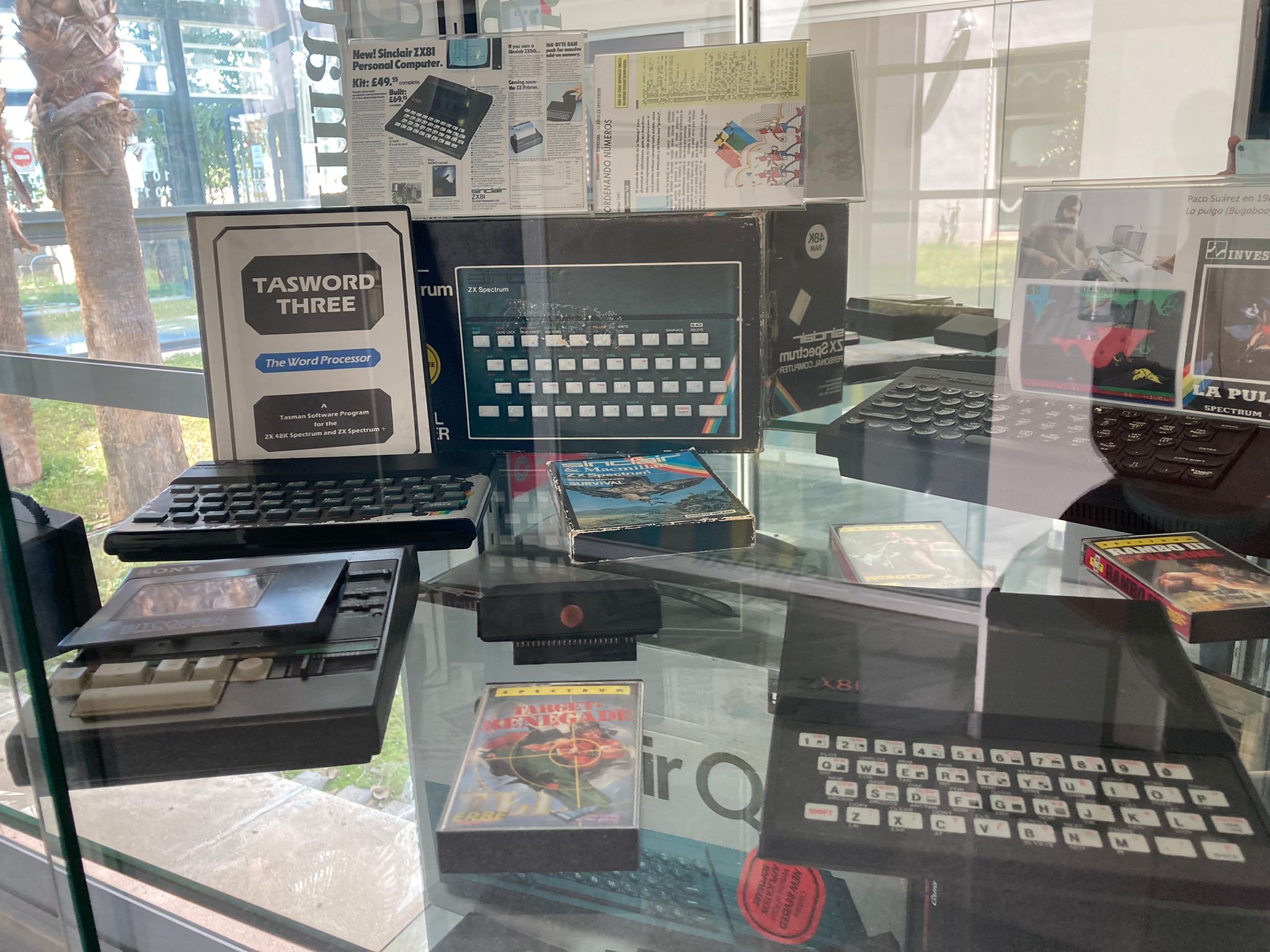

Meanwhile, the world of computers, aimed at large companies until then, suffered a transformation which was a consequence of their emergence on the market of microprocessors, which allowed for the production of the first truly personal computers in history, at an affordable price and with a size similar to any household appliance. These new personal microcomputers, designed with an 8-bit architecture, will find in the videogame sector an ideal field to offer the consumer a new amusement product, though always disguised as a tool of the future. However, this connection between videogames and the first home computers not only avoided the drive of computing, but also became the main reason for the demand explosion and development of new products, which finally led to the final implementation of the personal computer just as we know it today.
Among the most charismatic companies responsible for this special cooperation, the following stand out: Sinclair (designer of the ZX80, the first computer available for less than a hundred pounds), Amstrad (with microcomputers sold as a single unit “all-in-one”), Commodore (whose C64 is still the most widely sold home computer in the world), Atari (with great interest in the videogame industry expansion towards new horizons), or the MSX consortium (which included companies such as Toshiba, Yamaha, Canon, Sony, etc., of great success in Japan and whose objective was to create standards for home computing.) During the 1980s, their computers were sold with a clear fun intention, thereby taking advantage of and at the same time contributing to the exponential growth of the videogame sector. Its social impact grew in leaps and bounds among computers, arcades and game consoles. Consoles had a firm and progressive prominence in the conquest of the home, not only with desk consoles, but also with the proliferation of multiple portable computers. We were at the home videogames’ peak, regardless of arcade machines, which seems to be continuing for several years because of a greater technical quality of their products.
The decade of the 1990s witnessed the definitive decline of the 8-bit personal computers, giving way to a new generation of more advanced technology, with 16-bit architectures. Computers such as Commodore Amiga, the Atari ST, or the IBM PC family and compatible ones, included a market which finally was totally controlled by the PC until today, with even space for video consoles with its own market niche. These developed together with computers of companies like SEGA, Nintendo or Sony, and little by little, were technologically leading the majority of arcades and finally removing the business model of arcade machines.
In conclusion, a passionate story in which the editorial industry is also worth mentioning. It supplies documentary evidence of this period and helps in a way to the establishment of technology. Nowadays, promotion and preservation of computing and videogames of those years, speaking both of commercial computers and their developed software, is a task mainly carried out by the social movement of culture “retrocomputing”, a group which is involved in this XXI century in developing new software products or creating new hardware (homebrew) for these platforms so as to maintain them active.







